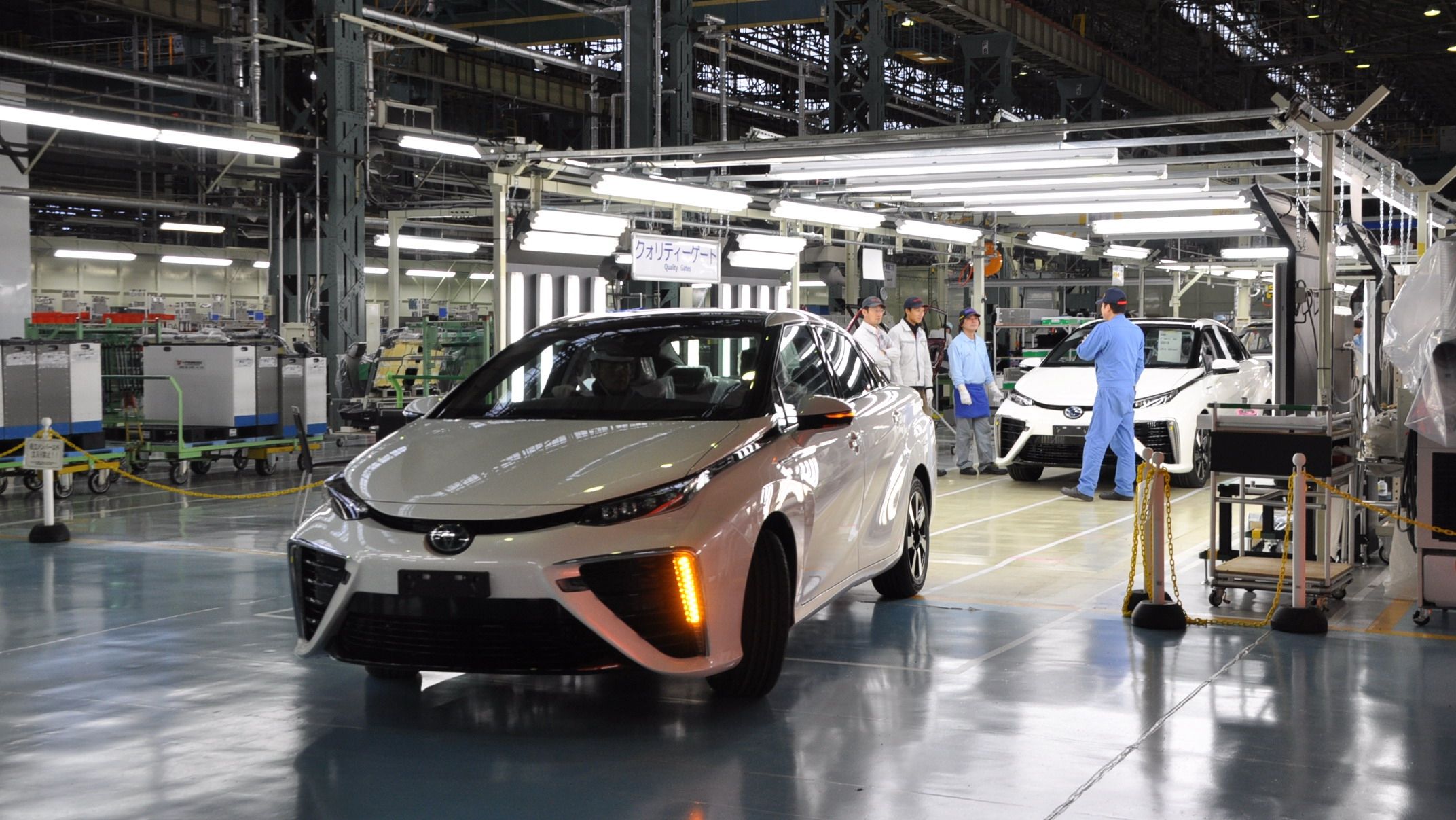I have a friend who several years ago left the his job as a very successful automotive journalist for a public relations position with one of the world’s largest car manufacturers. When I asked him why he did it, he explained that once he had driven every low-volume supercar->ke177 under the sun, the job actually started to get boring, and the logistics and scale of high-volume car manufacturing started to look more interesting. At the time I thought his brain had fallen out through his ear, but after some reflection, I think I new what he meant.
These five videos from Toyota->ke88 showing the build process of the new Mirai->ke4985 fuel-cell sedan reinforce his sentiment. There’s no music, no voiceovers and no obnoxious edits, just cars getting screwed together by people who know what they’re doing. It might sound weird, but watching it all come together honestly gave me a sense of Zen and completeness.
The packaging requirements of a hydrogen fuel-cell car make the assembly particularly interesting to watch. The third video->ke278 shows the fuel being assembled separately. By the time the battery pack, electric motor and absolutely massive fuel cells are all bolted together, you might begin to wonder if the engineers actually bothered to figure out how to fit it all in the compact chassis. Obviously it all comes together, but actually watching it is truly fascinating.
Though the Mirai uses many components common throughout the rest of the Toyota lineup, its low-volume, experimental status means it's assembled at the Motomachi Plant, which started out as Toyota’s first assembly facility 56 years ago. Now nicknamed “LFA Works, “ it’s where Toyota’s most special cars are assembled, including the LFA, Soarer, Corona and Supra.
Continue reading to learn how the Toyota Mirai is made.
Why it matters
Sales of the Mirai have already begun in Japan, while sales on our shores are expected to begin in 2016. Why the wait? Toyota is currently driving the expansion of hydrogen stations in the northeastern United States, where the Mirai will be sold. There are 12 new hydrogen stations planned for New York, New Jersey, Massachusetts, Connecticut and Rhode Island. It will also be sold in parts of California that already have sufficient hydrogen infrastructures.
Prices for the Mirai will start at just over $57,000, which is expensive, but somewhat offset by free hydrogen fuel, courtesy of Toyota, and up to $13,000 worth of local and federal incentives, depending on the state you live in. Plus, it’s has a range of 300 miles and can power your house for an entire week in the event of an outage. That’s really cool, but we’re still not sure why it has to look so bizarre.

